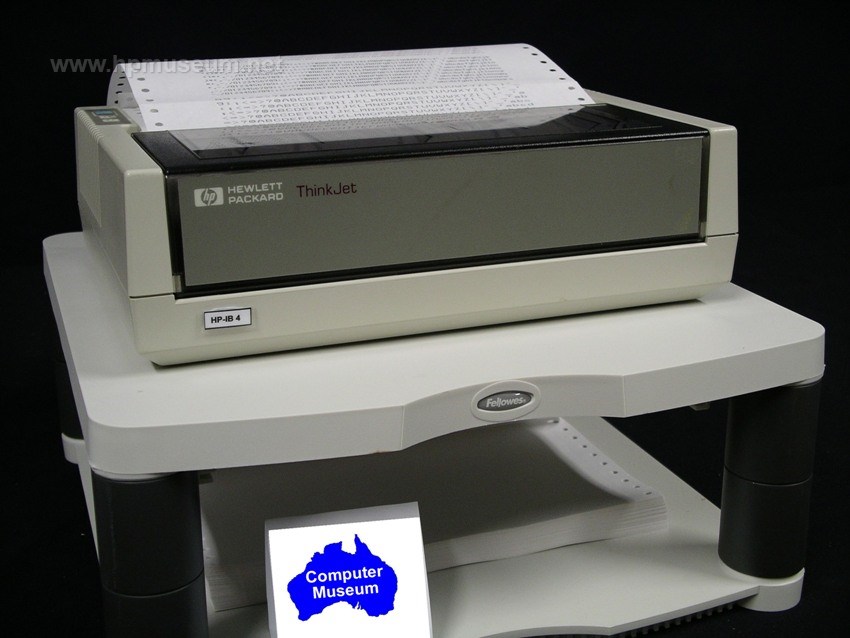Printers
 | Inkjet Selection: |
| 1) ThinkJet (1984) | |
| 2) QuietJet (1986) | |
| 3) QuietJet Plus (1986) | |
| 4) PaintJet (1987) | |
| 5) DeskJet (1988) | |
| 6) 3396A Integrator (1988) | |
| 7) DeskJet Plus (1989) | |
| 8) DeskWriter (1989) | |
| 9) PaintJet XL (1989) | |
| 10) DeskJet 500 (1990) | |
| 11) DeskJet 500C (1991) | |
| 12) PaintJet XL300 (1992) | |
| 13) DeskJet 550C (1992) | |
| 14) DeskJet Portable (1992) | |
| 15) DeskJet 520 (1994) | |
| 16) DeskJet 560C (1994) | |
| 17) DeskJet 320 (1994) | |
HP introduced its first inkjet printer (The ThinkJet ) in 1984. HP invested heavily in inkjet printing. Almost all of the breakthrough technology was in the disposable printheads, which included both the ink reservoir and printing substrate. The ThinkJet was a successful product, but it had several limitations. Like the laser printers, it took HP three years after the introduction of its first machine to introduce the "breakthrough" product. With inkjet printers, that product was the DeskJet in 1987. The DeskJet had a resolution of 300 dpi (same as a laser printer), printed on plain paper, and had a cut sheet feeder. Collector's Notes: After sitting unused for a few months or longer, most older inkjet printers won't print properly. This is usually caused by dry ink obstructing printhead contacts and clogging printhead nozzles. Cleaning printhead contacts is fairly easy. Just dip a cotton bud into isopropyl alchohol and wipe accross the contacts on the printhead and the contacts on the print carriage. You may need to do this a few times to get the job done. Unclogging the printhead nozzles is a lot trickier, but possible under tightly controlled conditions. We do not recommend you attempt this unless you have an industrial oven and adhere to strong safety procedures. We have succeeded in unclogging old printheads by wrapping them in flameproof material and placing them in an oven for about fifteen minutes at 100 degrees Celsius. It is often necessary to repeat this procedure several times to get the ink flowing again. | |
| Back | Product Documentation | Category Accessories |
^ TOP©2004 - 2024 BGImages Australia - All Rights Reserved.
The HP Computer Museum and BGImages Australia are not affiliated with HP Inc. or with Hewlett Packard Enterprise. Hewlett Packard and the HP logo are trademarks of HP Inc and Hewlett Packard Enterprise. This website is intended solely for research and education purposes.
